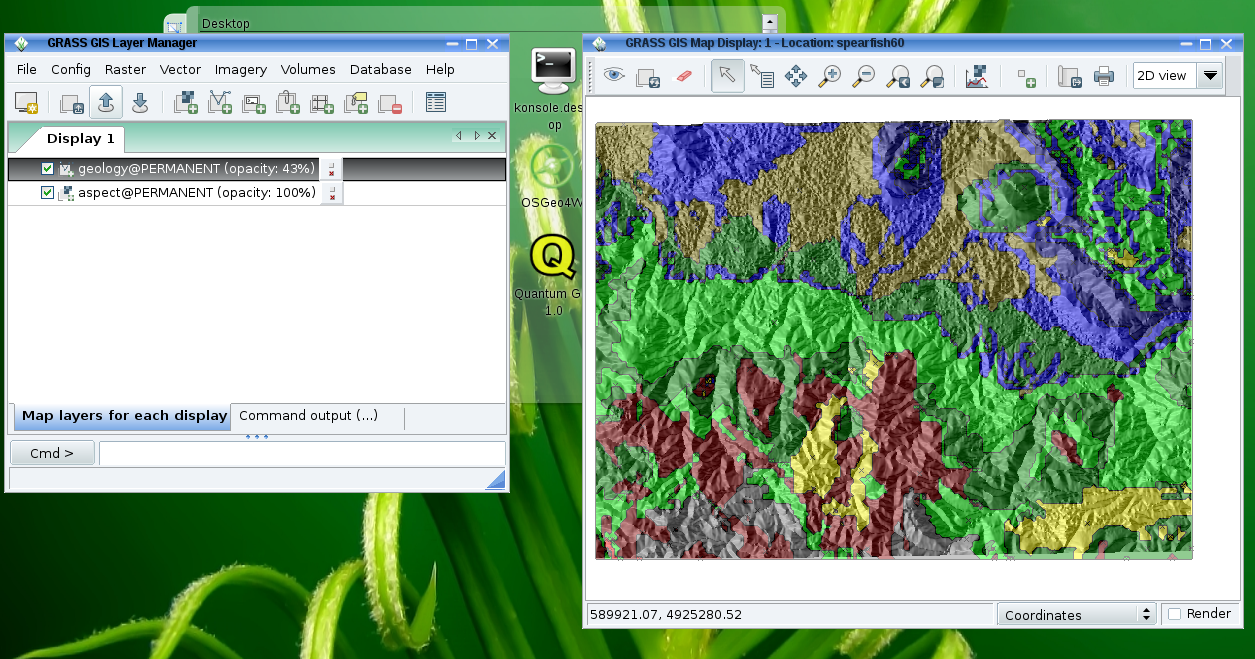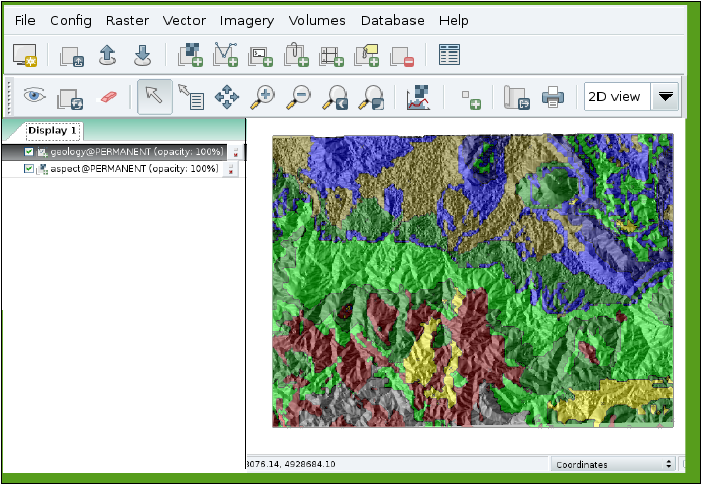GRASS SoC Ideas 2011

About
This is the GRASS page for Google Summer of Code 2011. Here we will list project ideas and and other information related to the GRASS GSoC projects.
Promotion:
- OSGeo Flyer at http://svn.osgeo.org/osgeo/marketing/flyer/google_summer_of_code/OSGeo_GSoC_2011.pdf
- Videos at http://code.google.com/p/google-summer-of-code/wiki/Videos
- More Flyers at http://code.google.com/p/google-summer-of-code/wiki/GsocFlyers
Timeline
See GSoC timeline
- √ Mentoring organization applications open (March 11)
- √ Accepted mentoring organizations announced (March 18)
- Interested students should initiate preliminary discussions with projects (March 18-27)
- Student applications open (March 28)
- Deadline for student's applications (April 8)
- Registering your application early (before the deadline) allows us to give you feedback for revisions before the final deadline, enhancing your proposal and thus giving you a better chance of success.
- Mentor assignments and application reviews deadline (April 22)
- Accepted proposals announced (April 25)
- Community bonding time (getting to know the students)
- Work Begins (May 23)
- Midterm evaluation (July 11-15)
- Pencils down! (August 15)
- Final evaluations submitted to Google (August 22)
- Final results of GSoC 2011 announced (August 29)
- Students can begin submitting required code samples to Google (August 30)
Required Steps
- List ideas
- Assign Mentors to Ideas
- Notify OSGeo
- Mentors evaluate student applications
- Accepted students announced
- Students subscribe to the grass-dev mailing list and introduce themselves
- Create directory structure in the GRASS add-ons SVN for projects and setup access for students
- Students must read and post agreement to RFC2 to the grass-psc mailing list to gain SVN access
- Create a Wiki page for each accepted project, to be used as a progress reporting tool
- Coding begins...
- Students and mentors: Complete the Mid-term survey
- Final commit and packaging for Google
Ideas
- Also review ideas from 2007, 2008, 2009, and 2010 which are still open.
- Project ideas of your own are also most welcome.
wxGUI
- offer also (optional) "conventional" GUI layout: For some users, the current approach of separate windows (SDI) leads to a windows flooding. This is a common complaint especially from newbies. Especially on large monitors or dual screen systems catching the wxGUI windows can be tedious when they appear on separate monitors (depends on windows manager, the much used KDE scatters typically the wxGUI windows all over the screen real estate). Almost each task generates a new wxGUI window which is freely floating around on the screen: example 1 and example 2. On a dual-screen this may sum up to 50cm of distance! The idea is to capture all those windows in one frame. For details, see WxGUI#Layout.
- Add WMS and/or TiledMapService layer support for wxGUI. Tiles/WMS images should not be stored as GRASS rasters but only used for displaying purposes (i.e. stored in temp folder). Such tool should provide user-friendly setting choices based on service GetCapabilities response.
- Your idea here
Willing to Mentor: Martin Landa, (your name here)
Raster
- Your idea here
Willing to Mentor: (your name here)
Vector
- Add OpenMP parallelization where appropriate, for example, v.surf.rst and v.vol.rst (co-mentor Helena Mitasova) . See above idea in the Raster section.
- Better support for wrap-around at 180 longitude: Currently the raster engine is pretty good at wrapping data over 180 longitude. The vector data isn't, but it should be. This is a great task if by the end of the summer you'd like to be familiar with the implementation method of an entire vector stack of a fully featured modern GIS.
- Your idea here
Willing to Mentor: Martin Landa, (your name here)
Imagery
- GRASS's imagery modules (for satellite, scanned maps, and orthophotos) act as enhanced raster modules. In GRASS 5 and 6 they were mostly implemented using interactive X-monitors which are not available in MS Windows and so are removed in the new cross-platform code of GRASS 7.
- We need someone willing to port the old modules to work with GRASS 7, including writing new wxPython GUI frontends to a number of existing tools and updating the imagery libraries to current raster library standards.
- In addition, there are a number of improved/automated georectification tools which have not been merged into GRASS 5/6 which it would be nice to have updated and merged into the main code.
- Implement OpenMP (multithreading) as much as possible
- Your idea here
See the ideas for imagery improvement and GRASS 7 ideas wiki pages for more details.
Willing to Mentor: (your name here)
Other
- Design and implement modern metadata management system for GRASS to support OGC CSW and INSPIRE discovery a view services
- Design and implement text displaying and styling in OGSF library and it's front-ends (NVIZ, wxNVIZ). Solution should be user configurable (fonts, colors, effects etc.) and multilanguage friendly.
- Design and implement user-provided symbol support in OGSF library and it's front-ends (NVIZ, wxNVIZ). Solution should support GRASS symbols, SVG, and/or simple EPS symbols.
- Design GRASS toolboxes environment, see GRASS repository layout proposal for detailed information. This would also include general clean up and organization of existing GRASS modules in trunk and add-ons.
- Design sophisticated Python scripting interface for GRASS based on GRASS Python Scripting Library
- Your idea here
Willing to Mentor: (your name here)
Guidelines for Students
How do you maximize your chances of getting picked? First read the Google SoC FAQ. Then talk to us about your idea. Try emailing our dev-mailing list, or come and talk to us in IRC (#grass). You can also reach the mentors directly by emailing:
- The OSGeo SoC mailing list
- Wolf Bergenheim (wolf+grass at bergenheim.net)
Getting started with GRASS coding
- The source code is maintained in a SVN server which is easy to browse
- Please review the SUBMITTING files there for our coding standards.
- There is lots of good info at the GRASS Developer's wiki
- See also the development section of the GRASS user's wiki

